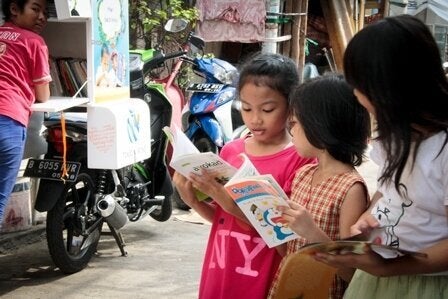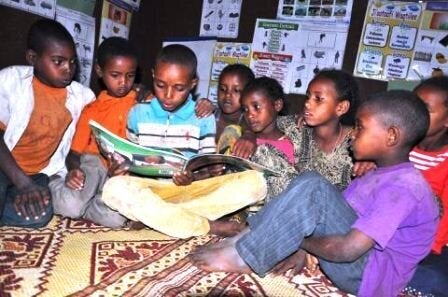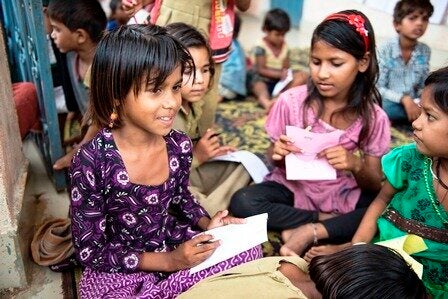
My 10-year-old son Gavin has a variety of intense interests, some of which have made their way into his desk at school. One of his recent fascinations was creating Star Wars characters out of origami paper. (The amazing book series which inspired him is called Origami Yoda, if you're interested!)
Gavin's paper-folding during school hours created a whole galaxy of challenges. He fiddled with the fine points of Jabba the Hutt when he was supposed to be doing math, and generated numerous Darth Vaders during spelling. The unfinished schoolwork Gavin brought home each night sent his Dad and me into hyperspace.
Canada vs. the world
I spoke to Gavin's teacher, who kept a closer eye on our son, redirecting him to the task at hand. She found ways to harness his passion by incorporating origami into a lesson or two. And she looked to broaden his interests, with other books from the school's vast library.
All this was possible because, to state what's obvious here in Canada, the teacher had been trained in the best ways to help children learn. Also, she had just 24 students to shepherd, and a whole school library full children's books at her disposal.
On International Literacy Day, I find myself thinking about classrooms where the challenges go far beyond paper folding. I think of children in the world's poorest, most remote regions, who walk for hours every day to reach the nearest school. I think of kids who are trying to retain new information while struggling against exhaustion, illness, or constant hunger. And that's just the beginning.
Large class sizes
Class sizes in the world's poorest regions are often so large that teachers can't possibly focus on individual children. "Classrooms with 50 or 70 students and just one teacher are common," says World Vision Canada's education specialist, Nancy Del Col.
The children in these classrooms had all learned to sit perfectly still and quiet so as to hear the lesson, Nancy explains. It sounds amazing until you consider what's missing. "There was absolutely no chance for interactive learning, children asking questions, offering comments, or reading out loud for the teacher," says Nancy.
Enrollment is up
These large classes are the result of some great news on the global education front. At the primary level, 91 per cent of the world's children are now enrolled in school. Governments, development organizations and individual donors around the world have worked hard to improve access to education -- and it's working. The doors are opening, and students are coming inside.
But the resources needed to educate all of these learners are sorely lacking: books, for example, and other learning materials, written in local dialects that children can understand. And then there's another resource that's in short supply: trained, paid teachers who actually speak the same local language as the children in their care.

This tiny village in a remote, mountainous area of China is days' walk from the nearest town, yet children attend school here. World Vision photo.
"Teachers are being sent to places where they don't know the children's mother tongue," says Nancy Del Col. "It's great that we're starting to reach children in more remote locations, or areas where war and conflict have turned life upside down. But if the teacher that's dispatched there can't communicate with the children, then no one learns. Such teachers are often so disheartened that they leave."
Poor marks for quality
The result is that nearly 250 million of the world's children are not learning the most basic literacy and number skills, even though half have attended school for at least four years of their lives. This group includes many of the most vulnerable kids, those who need every chance they can get.
"In some regions, we're seeing grade 7 and 8 students who are functionally illiterate," says Nancy. "It's a real learning crisis."
It's painful to picture a child walking for hours under the beating sun every day, only to find no teacher in the classroom. It's heartbreaking to imagine a child, desperate to read, waiting for days just to have a turn with one of the school's precious books. And it's distressing to hear of children trekking to school for four whole years, only to remain unable to read and write.
Creative solutions bring hope
I asked Nancy about some of World Vision's programs to help support children in the school system. Innovative solutions like our mobile libraries travel between villages to bring children a variety of books to borrow and enjoy.

World Vision Indonesia has long operated mobile libraries and thousands of children have reaped the benefits. This motorcycle library visits children in a crowded area of urban Jakarta that can't be accessed by car. World Vision photo.
Then there's the amazing Literacy Boost concept, being introduced in several African countries, through a partnership between World Vision and Save the Children. It's a supplementary literacy program (conducted outside of school) which significantly improves children's reading skills and reading comprehension.
Since 2014, World Vision has built a total of 40 reading clubs in Ethiopia alone, creating 151 new story book titles, and training 120 reading camp volunteers. The clubs now serve 3,792 children in just one district of the country.
Children attend the clubs on weekends and school breaks, where they read to one another, tell stories, draw pictures that represent letters, playing letter-matching games, and most wonderfully of all -- borrow books.

In Ethiopia, 10-year-old Addisu (centre, with book) loves coming to reading club, where he enjoys reading aloud to his friends to show what he's learned. "When I first came here, I only knew names of very few letters," he says. "But now I can read fluently."

In India, Literacy Boost helped Poonam learned to read, so she can continue to progress in school. World Vision photo.
It's a blessing to live in Canada, where one of my biggest challenges is getting my kids to actually stop reading at bedtime. The challenge ahead of us is to use innovative solutions like these to help more of the world's children to start.
MORE ON HUFFPOST:
